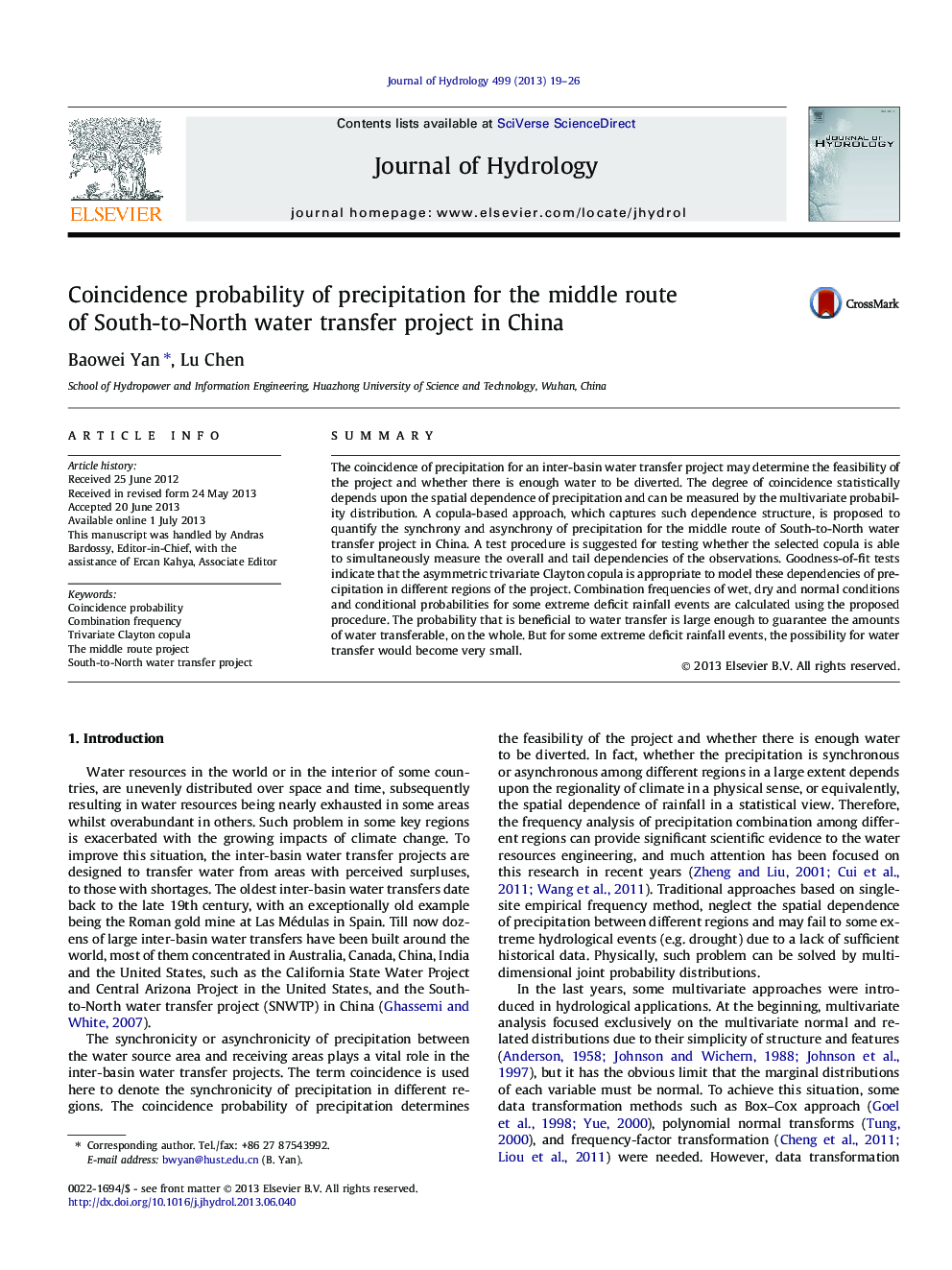| Article ID | Journal | Published Year | Pages | File Type |
|---|---|---|---|---|
| 6413605 | Journal of Hydrology | 2013 | 8 Pages |
â¢The degree of precipitation coincidence was measured by copulas.â¢Spatial and lower tail dependencies were detected through goodness-of-fit tests.â¢Conditional probabilities for extreme deficit rainfall events were calculated.â¢The probability is large enough to guarantee the amounts of water transferable.
SummaryThe coincidence of precipitation for an inter-basin water transfer project may determine the feasibility of the project and whether there is enough water to be diverted. The degree of coincidence statistically depends upon the spatial dependence of precipitation and can be measured by the multivariate probability distribution. A copula-based approach, which captures such dependence structure, is proposed to quantify the synchrony and asynchrony of precipitation for the middle route of South-to-North water transfer project in China. A test procedure is suggested for testing whether the selected copula is able to simultaneously measure the overall and tail dependencies of the observations. Goodness-of-fit tests indicate that the asymmetric trivariate Clayton copula is appropriate to model these dependencies of precipitation in different regions of the project. Combination frequencies of wet, dry and normal conditions and conditional probabilities for some extreme deficit rainfall events are calculated using the proposed procedure. The probability that is beneficial to water transfer is large enough to guarantee the amounts of water transferable, on the whole. But for some extreme deficit rainfall events, the possibility for water transfer would become very small.
